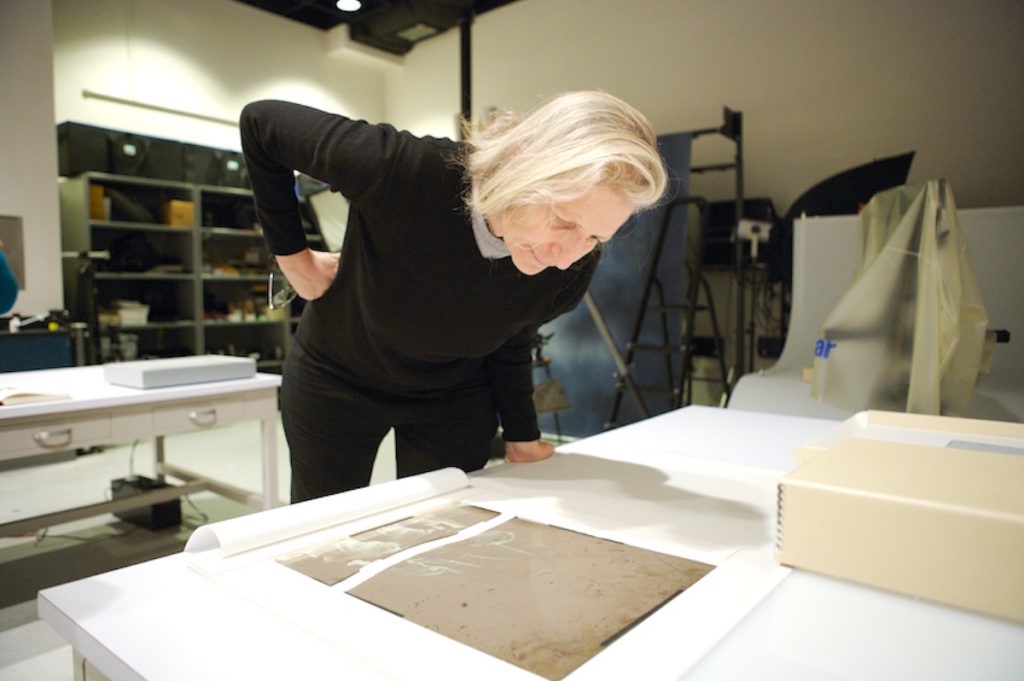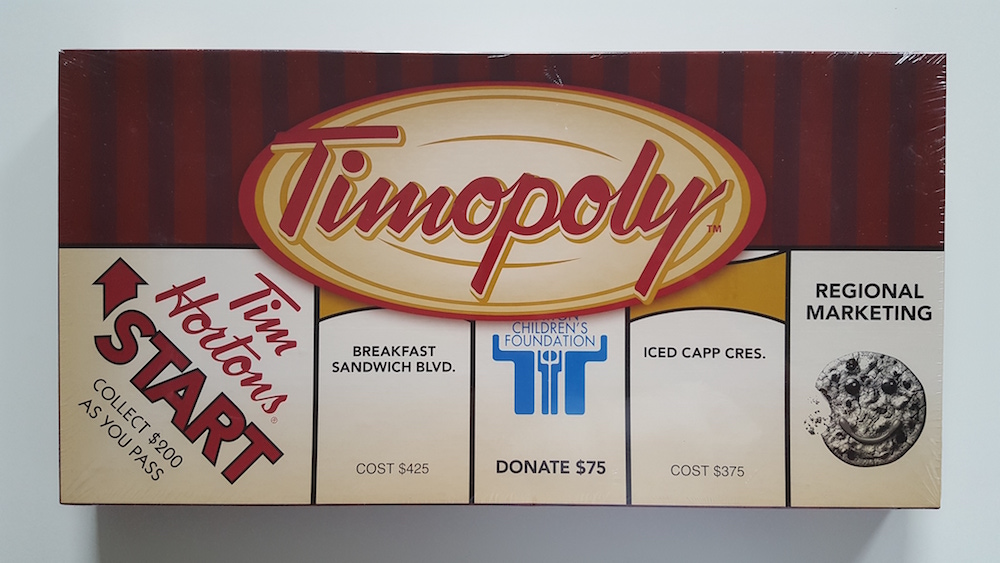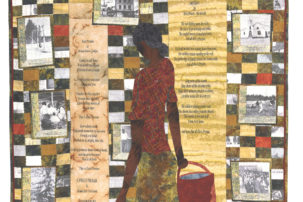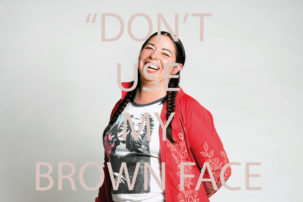Reports this week of the latest financial problem for American photographer Annie Leibovitz—who in 2009 nearly had to file for bankruptcy and in 2010 was sued by a company who says it was unpaid for helping to restructure her debt—have unexpectedly placed a spotlight on a little-known Canadian group called the Canadian Cultural Property Export Review Board.
Three times now, the members of the Canadian Cultural Property Review Board (or CPERB) have denied an application by the Art Gallery of Nova Scotia to certify a collection of more than 2,000 Annie Leibovitz photos as “cultural property…of outstanding significance or national importance.”
As the CBC explained in a fulsome investigative report, Leibovitz has only been paid half of the $4.75 million sale price of the prints, since the second half of the payment was only contractually due when the certification of “outstanding significance or national importance” came through.
The Art Gallery of Nova Scotia has recently submitted a fourth application to CPERB to attempt to get the Leibovitz photographs certified, and is awaiting results.
The situation is confusing, but despite many significant complications one thing is clear: it’s time to learn more about CPERB and its powers.
What is CPERB, exactly?
The Canadian Cultural Property Export Review Board, according to its website, “is an independent, quasi-judicial decision-making body that reports to Parliament through the Minister of Canadian Heritage.”
“Established in 1977 by the Cultural Property Export and Import Act,” the website continues, “the Review Board determines whether cultural property is of outstanding significance and national importance with a view to protecting and preserving Canada’s artistic, historic, and scientific heritage and making it accessible to the public.”
What are the main functions of CPERB?
As a recent appointment notice for CPERB suggested, one of the key functions of CPERB is to control not only certifications of cultural property, but the outlay of tax incentives to donors of such property (like private collectors and art dealers)—incentives which are only available when CPERB makes a certification of “outstanding significance and national importance.”
As the appointment notice states, CPERB “certifies cultural property as being of outstanding significance and national importance. The certification of cultural property offers tax incentives to donors and vendors of cultural property. The certification process encourages the transfer of significant examples of Canada’s artistic, historic, and scientific heritage from private hands to public collections.”
This detail around tax incentives is especially important in the Annie Leibovitz case, as the Canada Revenue Agency has flagged the donor of the Leibovitz collection, Harold Mintz—himself a tax expert and partner at accounting firm Deloitte LLP—with attempting to inappropriately access a tax shelter in this donation arrangement.
CPERB also has another main function: “It reviews applications for export permits of objects refused by the Canada Border Services Agency. Export delays provide designated organizations with an opportunity to acquire culturally significant objects or collections that might otherwise be permanently lost to Canada.”
Also, in rare cases, CPERB “also determines what constitutes a fair cash offer to purchase an object, the export of which has been delayed when an exporter and an interested institution cannot agree on a fair purchase price.”
Who are the current members of CPERB?
The Canadian Cultural Property Export Review Board consists of a chairperson and up to nine other members. (Currently, the website lists just one chairperson and eight other members.)
The members currently listed on the CPERB website are a mix of art dealers, museum and gallery curators, and representatives of the public at large.
According to CPERB rules, the chairperson must always be one of the representatives of the public at large, and the number of institutional curators and art dealers is capped at four members each.
Here, in alphabetical order, is a list of the nine currently posted members of CPERB.
Glen A. Bloom, senior counsel (intellectual property) with Osler, Hoskin & Harcourt LLP, Ottawa
Bloom—who, with his wife Deborah Duffy, is also a well-known art collector and museum patron in addition to being a lawyer—recently joined CPERB in February 2017 as a representative of the public at large, and his term is due to last until February 2020. He has litigated patent, copyright and trademark causes before the Supreme Court of Canada, Federal Court of Appeal, Federal Court of Canada and Copyright Board of Canada. He has also taught at the York University Law School at the University of Ottawa. His collection—part of which was exhibited in 2009 at the Carleton University Art Gallery, where he is currently a member of the advisory board—includes Canadian photography, with works by Rodney Graham, Arnaud Maggs, Max Dean and Lynne Cohen present, though paintings and sculpture by the likes of Leslie Reid and Evan Penny are also part of his collection. (He has also helped assemble an art collection for the Osler, Hoskin & Harcourt offices.)
Rudy Buttignol, president and CEO of Knowledge Network Corporation and president of BBC Kids
Buttignol is a member of the board under its “dealers in or collectors of cultural property” category, with a term that started in November 2014 and is due to wrap up in November 2017. Documentary filmmaking is a cause he is known for championing, having won a Doc Mogul award from Hot Docs and nine Canadian Screen Awards. Earlier in his career, he was a documentary filmmaker himself; in 1979 he made a film about Jack Bush. When he was at TV Ontario after that, he greenlighted Jennifer Baichwal’s film Let It Come Down, about writer Paul Bowles, and Manufactured Landscapes, about photographer Edward Burtynsky, among other award-winning films. In 2015, he was appointed a member of the Order of Canada.
Monte Clark, owner/director of Monte Clark Gallery in Vancouver
Though long-time Vancouver gallerist Monte Clark—also in the “dealers in or collectors of cultural property” category—was only posted for the June 2016 to June 2017 term, he is still listed as a board member on the CPERB website. Clark originally established his gallery in 1992, and he represents a number of prominent Canadian photo-based artists, including Greg Girard, Stephen Waddell, Scott McFarland, Roy Arden and Karen Bubas. His roster also includes international photo artists such as Justine Kurland and Anthony Goicolea, and Canadian painters and sculptors including Tim Gardner, Colleen Heslin and Jeremy Hof, among others.
Clarence Epstein, senior director of urban and cultural affairs, Concordia University
Listed under “representatives of collecting institutions” on the board, Epstein started there in November 2014 and will continue until November 2017. Though occupationally, Epstein is responsible for dossiers pertaining to cultural property, urban planning, built heritage, conservation, public art, museum relations and festival partnerships at Concordia University, he is perhaps best known in the art sphere through his management of estate holdings and collections of art dealers, architects, politicians and industrialists. In particular, Epstein leads the Max Stern Art Restitution Project—a worldwide initiative to recover Nazi-looted paintings owned by the late, noted German-Canadian dealer.
Patricia Feheley, director of Feheley Fine Arts in Toronto
Feheley, who serves on the board as one of the “dealers in or collectors of cultural property,” will be a member of CPERB until May 2018. Feheley is one of Canada’s preeminent dealers of Inuit art, and operates out of her namesake gallery in Toronto. There, Feheley sells work by the likes of Annie Pootoogook, Shuvinai Ashoona, Kenojuak Ashevak and more. Feheley frequently writes about Inuit art, and holds a number of advisory roles: she is, at present, on the board of the Art Dealers Association of Canada and the Cultural Human Resources Council, and represents ADAC for the Visual Arts Alliance (VAAAAV).
Sharilyn J. Ingram, faculty member at Brock University’s Marilyn I. Walker School of Fine and Performing Arts
Chairperson of CPERB, and due to continue there until December 2019, Ingram is designated as a “representative of the public at large” on the board. She is known for work in leading museums and cultural institutions including the Royal Alberta Museum, Saskatchewan Western Development Museums, Art Gallery of Ontario and the Royal Botanical Gardens. During her time as director of planning and management services at the National Museums of Canada, she directed the preparation of legislative proposals for the establishment of independent national museum corporations.
Alain Lacoursière, art consultant
Alain Lacoursière is described in his CPERB bio as a consultant in fine art valuation, but to many Quebecers, this former police officer is better known as “The Columbo of Art”—a phrase was the title of his biography published in 2010. He is listed on the CPERB board under “representatives of collecting institutions” for a term of July 2014 to July 2017. Lacoursière was a police officer in Quebec for 28 years, 15 of them devoted to fine art investigations. He also holds a Bachelor of Arts in art history from the Université de Montréal and has completed international training in cultural property protection and legislation. On his website, he offers authentication, appraisal and collection archiving services. Some of his past projects include working on a catalogue raisonné for Jean-Paul Riopelle’s estate, development of an international database for identifying art fakes and serving as chairman of the Serge Lemoyne Foundation.
Dr. Katharine Lochnan, senior curator emeritus at the Art Gallery of Ontario in Toronto
Lochnan, a member of the “representatives of collecting institutions” portion of CPERB until May 2018, has a long history with the AGO, where she worked in the curatorial department for some 47 years. Lochnan is largely responsible for developing the collection of the European prints and drawings at the AGO, and she organized some of the gallery’s most significant exhibitions, such as “Mystical Landscapes: Masterpieces from Monet, Van Gogh and more” (produced in partnership with Musée d’Orsay), and “Turner, Whistler, Monet: Impressionist Visions” (with Tate Britain, London, and the Réunion des Musées Nationaux/Musée d’Orsay, Paris).
Theresa Rowat, director of the Archive of the Jesuits in Canada
Also a “representative of a collecting institution,” Theresa Rowat has a long history in archive work, and is due to remain with CPERB until February 2018. Prior to her current position, she was director and university archivist at McGill. Previously, she held positions with the National Archives and the Ontario Ministry of Culture, and provided consulting and curatorial services to organizations and government departments. She currently sits on the boards of the Canadian Council of Archives and the Réseau des services d’archives du Québec. Working over 30 years in heritage and culture, she brings specialized expertise in archival collections with a focus on visual and media holdings.
How does one become a member of CPERB?
Members of CPERB are appointed by the Governor in Council on the recommendation of the Minister of Canadian Heritage.
Online applications were being accepted earlier this year for new appointments to the board. Calls for appointments are listed when available on the CPERB website.
What compensation do members of CPERB receive?
According the recent appointments notice, CPERB members receive a per diem of $350 to $400, presumably to help accommodate CPERB meetings in Ottawa.
How often does CPERB meet?
CPERB meets four times a year to consider certification applications and review requests to appeal refused export permits.
Upcoming meetings are already slated for the next year and a half. They are as follows: September 6 to 9, 2017; December 13 to 15, 2017; March 20 to 23, 2018; June 20 to 22, 2018; September 12 to 14, 2018; and December 12 to 14, 2018.
Why exactly did CPERB deny the Art Gallery of Nova Scotia’s repeated Annie Liebovitz applications?
The CBC investigative report on the Leibovitz photos outlined several reasons why CPERB repeatedly rejected the Art Gallery of Nova Scotia’s request for certification of them.
Interestingly, some of the reasons that CPERB, in consultation with the Canada Revenue Agency, gave as specific issues against the initial 2013 Leibovitz request mirror general guidelines that the board later announced in 2014 for all applicants.
In an advisory CPERB issued in June 2014 about tax-shelter gifting arrangements, the board stated that tax-shelter gifting arrangements involving cultural property “may be distinguished by one or more of the following characteristics”:
- large collections, often photographic, by non-Canadian creators (Annie Leibovitz is American)
- property acquired by the donor(s) shortly before the donation (Mintz acquired the property two days before donating)
- purchase price difficult to ascertain or subject to later adjustment (part of the issue involved has been adjustments to Leibovitz’s sale price)
What are the implications for other art galleries and museums in Canada?
The Leibovitz collection donation is certainly not the only large-scale photo archive of a non-Canadian artist that has been high-profile in Canada in the last few years. And given that the aforementioned general directive from CPERB has been to flag such photo collections, one wonders how this might impact other big-name acquisitions.
However, not all large-scale non-Canadian photo collections donations have suffered the same fate of Leibovitz and the Art Gallery of Nova Scotia.
In 2014, for instance, the University of Toronto Thomas Fisher Rare Book Library received a major donation of Allen Ginsberg photographs courtesy of the Rossy Family Foundation of Montreal (Larry Rossy was the longtime CEO of Dollarama, which is still operated by the family). CPERB did, in fact, end up certifying this application.
And other galleries also seem to be forging ahead with these types of large-scale photo donations, regardless.
In 2015, it was announced that a new Canadian Photography Institute would be formed at the National Gallery of Canada, based in part on significant donation of 12,000 objects that year from David Thomson, prolific collector and CEO of Thomson Reuters, from what the Globe and Mail called his Origins of Photography collection.
In 2017, the Art Gallery of Ontario announced that it would be acquiring a collection of 522 photos from the estate of American photographer Diane Arbus; in captions, the photos are designated as an anonymous gift.

 Annie Leibovitz at the US National Archives at College Park, Maryland, in February 2011. Leibovitz was photographing original Mathew Brady glass plate negatives of Abraham Lincoln for her book Pilgrimage. Photo: Earl McDonald, National Archives.
Annie Leibovitz at the US National Archives at College Park, Maryland, in February 2011. Leibovitz was photographing original Mathew Brady glass plate negatives of Abraham Lincoln for her book Pilgrimage. Photo: Earl McDonald, National Archives.







